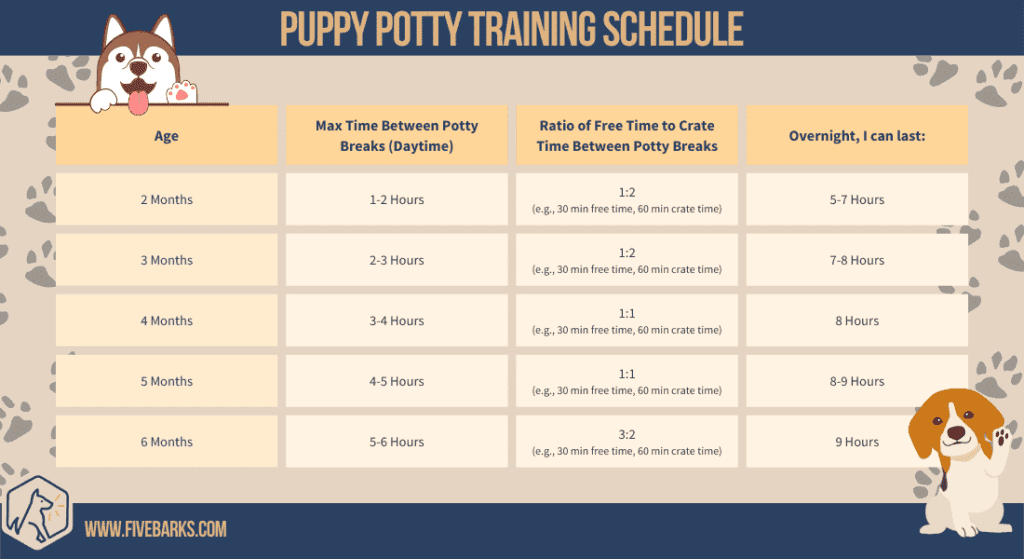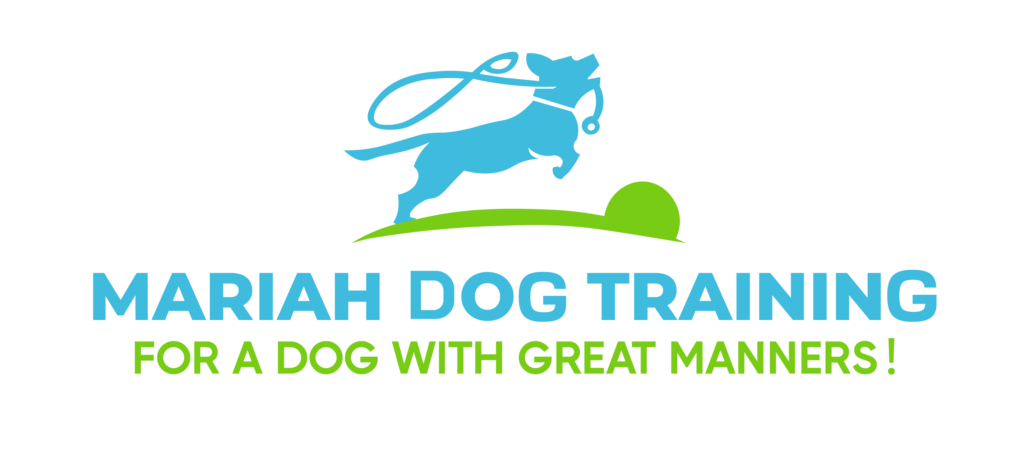Bringing a new puppy into your home is an adventure filled with excitement and joy. It’s a moment that marks the beginning of a beautiful journey with a furry companion who will bring endless love and laughter into your life. However, it’s also a time that comes with significant responsibility. The first day with your new puppy is crucial in setting the foundation for your lifelong bond and shaping their future behavior and well-being.
The initial 24 hours are about much more than cuddles and playtime; they are pivotal in establishing a sense of security and belonging for your new family member. This period is a blend of introducing your new puppy to their new environment, establishing a routine, and beginning the bonding process. It’s a time to lay the groundwork for trust, training, and mutual understanding.
In this guide, we’ll walk you through the essential steps to ensure that your new puppy’s first day at home is as smooth and stress-free as possible, both for you and your new four-legged friend. Remember, the experiences and habits formed during these first 24 hours can have a lasting impact on your puppy’s life. Let’s make these moments count!

Related: Puppy Training: Puppy Socialization and Manners Training
Preparing Your Home Before the Puppy Arrives
Before your new puppy steps paw into their new home, it’s essential to ensure that your space is safe and welcoming. Puppy-proofing your home is a crucial step in preventing accidents and creating a comfortable environment for your furry friend.
Puppy-Proofing Your Space
- Secure Hazardous Areas: Start by securing areas that could be dangerous for a curious puppy. Block off stairs, pools, and any rooms you want to keep off-limits. Use baby gates or puppy pens as necessary.
- Remove Toxic Substances: Ensure that all harmful substances, such as cleaning supplies, medications, and certain houseplants, are out of reach. Puppies are known for their curiosity, and you want to avoid any harmful ingestions.
- Hide Electrical Cords: Puppies love to chew, and electrical cords pose a serious risk. Tuck away cords or use protective covers to prevent any electrical hazards.
- Secure Loose Items: Small objects that can be easily swallowed, such as children’s toys, should be kept out of reach. Also, secure any items that can be knocked over or broken.
Essential Supplies for Your New Puppy
- Food and Water Bowls: Choose sturdy, easy-to-clean bowls for your puppy’s food and water.
- Puppy Food: Select a high-quality puppy food appropriate for your new pet’s age, size, and breed.
- Bed and Crate: Provide a comfortable bed or crate for your puppy to sleep in. This will be their safe space where they can relax and feel secure.
- Toys: Offer a variety of toys for chewing, playing, and mental stimulation. Ensure these are safe for puppies and appropriate for their size.
- Collar, Leash, and ID Tags: A well-fitting collar, a sturdy leash for walks, and ID tags with your contact information are essential for your puppy’s safety.
- Grooming Supplies: Depending on your puppy’s breed, grooming supplies like a brush/comb, shampoo, and nail clippers may be necessary.
- Potty Training Supplies: Puppy pads, a pooper scooper, and waste bags are essential for potty training your new puppy.
- First-Aid Kit: Prepare a basic first-aid kit for emergencies. This should include items like bandages, antiseptic, and the contact information for your local vet.
Preparing your home with these steps and essential supplies will help create a smooth transition for your new puppy, setting the stage for a happy, healthy, and safe start to your life together.
The Arrival: Welcoming Your New Puppy Home
The moment your new puppy arrives at their forever home is one filled with excitement and new beginnings. It’s important to manage this introduction thoughtfully to ensure your new puppy feels safe and comfortable from the start.
Introducing Your New Puppy to Their New Home
- Start with a Calm Environment: Keep the atmosphere peaceful and quiet. Loud noises and overexcitement can overwhelm your new puppy. A calm welcome allows them to adjust without added stress.
- Introduce One Room at a Time: Begin by introducing your new puppy to one area or room, especially where they will eat and sleep. Gradually allow them to explore other parts of the house under supervision.
- Offer a Comforting Presence: Stay close to your new puppy as they explore, offering gentle encouragement and comfort. Speak in a soft, reassuring tone to build their confidence.
- Keep First Interactions Small: If there are other family members or pets in the home, introduce them one at a time to avoid overwhelming your new puppy. Ensure all interactions are closely supervised and calm.
Creating a Calm and Welcoming Environment
- Designate a Puppy Zone: Set up an area specifically for your new puppy with their bed, toys, and water bowl. This will be their safe haven where they can retreat when they feel overwhelmed.
- Familiar Scents Help: If possible, bring a blanket or a toy from the puppy’s previous home to help them feel more at ease. Familiar scents can provide comfort in a new environment.
- Encourage Exploration: Allow your new puppy to explore at their own pace. Show them where their food and water are, and guide them gently to their sleeping area.
- Be Patient with Potty Accidents: Your new puppy might have a few accidents as they learn where to go potty. Be patient and use positive reinforcement when they do go in the right spot.
- First Meal at Home: Offer a small meal soon after arrival. This helps to establish a routine and creates a positive association with their new home.
- Quiet First Night: Make the first night as peaceful as possible. A soft bed and a warm, quiet room will help your new puppy settle in. Some puppies might appreciate a ticking clock or a soft music player nearby, which can mimic the heartbeat of their littermates.
Welcoming your new puppy into your home is a special and memorable experience. By following these steps, you ensure that your new puppy’s introduction to their forever home is as comfortable and stress-free as possible, paving the way for a happy and healthy life together.
Establishing a Routine for Your New Puppy
Creating a consistent routine is crucial for your new puppy to feel secure and to learn what is expected of them. A predictable schedule for feeding, potty breaks, and sleeping helps your puppy adjust more quickly to their new environment and aids in their training and development.
Setting Up a Feeding Routine
- Consistent Meal Times: Feed your new puppy at the same times each day. This consistency helps regulate their digestion and sets a pattern for their daily routine.
- Appropriate Portions: Follow the feeding guidelines for your puppy’s breed and size, as recommended by your vet. Overfeeding or underfeeding your new puppy can lead to health issues.
- A Quiet Place to Eat: Provide a calm, distraction-free area for your puppy to eat. This helps them focus on their meal and feel secure during feeding times.
Establishing a Potty Routine
- Frequent Breaks: Puppies have small bladders and will need to go outside frequently – usually after waking up, after playing, and after eating or drinking.
- Designated Potty Area: Consistently take your new puppy to the same spot to do their business. They will learn to associate this area with potty time.
- Positive Reinforcement: Always praise your puppy and give them a small treat when they successfully go potty in the right place. This reinforces good behavior.
- Understanding Accidents: Expect a few accidents in the early stages. Never punish your puppy for this; instead, redirect them to the correct spot and throw them a big “party” if they finish their business in the designated area.
Creating a Sleeping Schedule
- A Comfortable Bed: Ensure your new puppy has a comfortable, quiet place to sleep. This could be a crate or a bed in a designated area of your home.
- Encourage Nighttime Sleep: Limit play and stimulation as bedtime approaches. A calm environment helps signal to your puppy that it’s time to wind down.
- Consistent Bedtime: Put your puppy to bed at the same time every night. This regularity helps set their internal clock and makes it easier for them to settle down.
General Tips for a Smooth Routine
- Patience is Key: Remember, your new puppy is just learning. Be patient and consistent with your routine, and they will soon adapt.
- Monitor and Adjust: Observe your puppy’s responses to the routine. You may need to make adjustments based on their individual needs and behavior.
- Family Involvement: If there are multiple people in your household, ensure everyone is on the same page with the routine to avoid confusion for your puppy.
Establishing a structured routine is not just about training; it’s about providing your new puppy with a sense of security and belonging in their new home. A well-established routine lays the foundation for a happy, healthy, and well-adjusted dog.
Related: What is the best age to start puppy training classes?

Image: Life With Dogs
Bonding with Your New Puppy
The bond you develop with your new puppy is foundational to your relationship and will influence your interactions for years to come. Bonding is a process that involves gentle play, positive interactions, patience, and understanding. It’s about creating a deep connection and trust between you and your puppy.
Tips for Bonding Through Gentle Play and Interaction
- Engage in Playtime: Puppies learn and bond through play. Engage in gentle play that is appropriate for your puppy’s age and size. Use soft toys and avoid overly rough play to prevent overstimulation.
- Teach Some Basics: Training sessions are an excellent way to bond. Start with simple commands like ‘sit’ and down.’ Keep sessions short, fun, and be generous with your treats to build your puppy’s confidence.
- Physical Affection: Show affection through gentle petting and cuddling. Understand your puppy’s comfort level – some may love long cuddle sessions, while others might prefer short pets and rubs.
- Talk to Your Puppy: Dogs are very responsive to human voices. Talk to your new puppy in a calm, friendly tone. This not only helps in bonding but also in getting your puppy accustomed to your voice.
- Consistent One-on-One Time: Spend quality time with your puppy every day. Whether it’s a walk, play session, or just sitting together quietly, this one-on-one time is essential for bonding.
The Importance of Patience and Understanding
- Be Patient: Remember, everything is new to your puppy. They are learning about you and their new environment. Be patient as they learn and grow.
- Observe and Learn: Pay attention to your puppy’s likes, dislikes, and individual personality. This understanding will help you interact with them in a way that strengthens your bond.
- Positive Experiences: Ensure that your puppy’s experiences with you and your family are positive. This builds trust and a strong emotional connection.
- Consistent Handling: Handle your puppy gently and consistently. Abrupt or rough handling can break trust, so it’s important to be mindful of how you interact physically.
- Respect Their Space: Just like humans, puppies need their own space sometimes. If your puppy seems to need a break or is retreating to their bed, respect this need for alone time.
Bonding with your new puppy is a beautiful and rewarding process. It’s built on mutual trust, respect, and understanding. By investing time in gentle play, positive interactions, and being patient, you’ll establish a strong and loving relationship with your new puppy that will last a lifetime.
Health and Safety: Your New Puppy’s First Vet Visit
One of the most important steps after bringing your new puppy home is scheduling their first veterinary check-up. This initial visit is crucial for ensuring your puppy’s health and well-being, and it sets the stage for a lifetime of preventive care.
The Importance of a Veterinary Check-Up
- Comprehensive Health Assessment: Your vet will perform a thorough physical examination to check your puppy’s overall health, including heart, lungs, eyes, ears, and coat.
- Vaccinations: Puppies need a series of vaccinations to protect against common diseases. Your vet will set up a vaccination schedule based on your puppy’s age and health.
- Parasite Control: The vet will check for parasites and discuss preventive treatments for fleas, ticks, and worms.
- Nutritional Guidance: This is a great opportunity to discuss your new puppy’s diet and nutritional needs with the vet, ensuring you’re providing the best food for their growth and development.
Preparing for the First Vet Visit
- Gather Necessary Documents: Bring any paperwork you have from the puppy’s breeder or shelter, including vaccination and health records.
- Transport Safely: Use a secure, comfortable pet carrier to transport your new puppy to the vet. This ensures their safety and reduces stress.
- Arrive Calmly: Try to keep the car ride and arrival as calm as possible to avoid stressing your puppy. Plan for extra time if necessary for your puppy to calm down. Being in a rush exacerbates excitable behavior.
- Prepare Your Questions: Write down any questions or concerns you have about your new puppy’s health, behavior, or care. This is an excellent opportunity to tap into your vet’s knowledge.
- Socialization Opportunity: Use this first visit as a chance to positively socialize your puppy with a new environment and new people.
What to Expect During the Visit
- Initial Examination: The vet will check your puppy’s weight, temperature, and conduct a physical exam.
- Discussion of Preventive Care: Topics like flea and tick prevention, dental care, and routine health monitoring will be covered.
- Vaccination Schedule: The vet will administer any necessary vaccinations and set up a schedule for future shots.
- Opportunity for Socialization: Allow your puppy to gently explore the vet office, ensuring a positive experience.
- Follow-Up Plan: The vet will provide a plan for future check-ups and any additional care your puppy may need.
Remember, this first vet visit is not just about immediate health concerns; it’s about setting your new puppy up for a healthy, happy life. It’s an important step in being a responsible pet owner and ensures that your new puppy is on the right track for a long and healthy life.
Managing Stress and Excitement
Bringing a new puppy home is an exciting time, but it can also be stressful for the young animal as they adjust to a new environment and new people. Recognizing and managing signs of stress in your new puppy is crucial for their well-being and can help them settle into their new home more comfortably.
Recognizing Signs of Stress in a New Puppy
- Excessive Whining or Barking: While some vocalization is normal, especially in a new environment, continuous whining or barking can be a sign of stress.
- Pacing or Restlessness: If your puppy is unable to settle down and is constantly moving around, it may indicate anxiety.
- Hiding or Avoidance: A puppy that constantly hides or avoids interaction may be feeling overwhelmed.
- Change in Appetite: A sudden lack of interest in food can be a stress indicator, especially if your puppy was eating well before.
- Excessive Licking or Grooming: Over-grooming or licking a particular spot excessively can be a response to stress.
Strategies for Keeping Your New Puppy Calm and Comfortable
- Create a Safe Space: Ensure your puppy has a quiet, comfortable area where they can retreat and feel secure, like a crate with soft bedding and familiar scents.
- Maintain a Calm Environment: Keep your home environment as calm as possible, especially during the first few days. Avoid loud noises and sudden movements.
- Slow Introductions: Gradually introduce your puppy to new people, pets, and experiences. Overwhelming them with too much too soon can increase stress levels.
- Routine and Predictability: Establishing a consistent routine for feeding, potty breaks, and playtime can increase your new puppy’s confidence.
- Gentle Handling: Approach and handle your puppy in a gentle, reassuring manner. Avoid forceful interactions and respect their need for space.
- Provide Mental Stimulation: Interactive toys and puzzle feeders can help keep your puppy mentally stimulated and prevent stress from boredom.
- Positive Reinforcement: Use positive reinforcement techniques to encourage desirable behavior. Praise, treats, and affection are great ways to reassure your puppy.
- Limit Overstimulation: Monitor your puppy’s reactions to new experiences and limit exposure if they seem overwhelmed.
- Regular Exercise: Adequate physical activity can help burn off excess energy and reduce anxiety in puppies. Avoid repetitive exercises, especially jumping higher than a few inches. Puppies have very fragile growth plates that can fracture under harsh or repetitive impact.
- Consult a Professional: If your puppy shows persistent signs of stress, consider consulting a veterinarian or a professional dog trainer for advice.
By understanding and managing your new puppy’s stress levels, you ensure a smoother transition to their new life with you. This approach not only promotes their well-being but also strengthens the bond between you and your new companion.
Conclusion
The first 24 hours with your new puppy are both exhilarating and foundational, setting the stage for your future together. Successfully navigating this crucial period requires preparation, patience, and a lot of love. Let’s recap the key steps to ensure you and your puppy have the best start:
- Home Preparation: Before your puppy arrives, puppy-proof your home and gather all the essential supplies. Creating a safe and welcoming environment is the first step to a smooth transition.
- The Arrival: Introduce your new puppy to their new home calmly and gradually. Remember, this is a big change for them, so keeping their environment peaceful is crucial.
- Establishing a Routine: Consistency with feeding, potty breaks, and sleep schedules helps your puppy understand what to expect, providing them with a sense of security.
- Building a Bond: Spend quality time with your puppy through gentle play and positive interactions. The bond you build now lays the groundwork for your future relationship.
- First Vet Visit: Schedule a check-up with the vet to ensure your puppy’s health and well-being, and to set up a vaccination schedule.
- Managing Stress and Excitement: Recognize and respond to signs of stress in your puppy. Creating a calming environment and being patient as they adjust is key.
As you embark on this journey with your new puppy, remember that patience and continuous learning are vital. Every puppy is unique, and they will teach you as much as you teach them. Embrace the process of getting to know each other, and enjoy the growth and changes you will both experience.
Welcoming a new puppy into your home is a wonderful adventure filled with challenges and rewards. By following these steps, you will provide your puppy with a strong foundation for a happy and healthy life. Remember, the love and effort you invest in these early days will be returned tenfold in the joy and companionship that your new furry friend will bring to your life.



